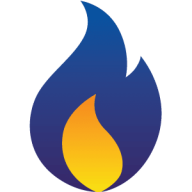

Infobright DB and Snowflake both offer robust analytical capabilities in the database industry. Snowflake often seems superior due to its comprehensive features and scalable performance.
Features: Infobright DB is distinguished by its efficient data compression, fast query performance, and capability to handle specialized datasets efficiently. Snowflake stands out with features like elastic data storage, separation of compute and storage for scalability, and seamless workload management, making it adaptable to various business needs.
Room for Improvement: Infobright DB could improve in simplifying deployment, enhancing cloud integration, and offering better customer support. Snowflake might benefit from cost optimization for smaller deployments, reducing learning curve for new users, and expanding its global support network.
Ease of Deployment and Customer Service: Infobright DB may require more initial setup, making it potentially less user-friendly, while Snowflake provides a streamlined cloud-based deployment and managed service model, ensuring easier implementation and maintenance. Snowflake's comprehensive support options are considered more convenient compared to Infobright DB.
Pricing and ROI: Infobright DB typically has lower setup costs, providing value for budget-constrained scenarios. In contrast, Snowflake's consumption-based pricing can result in more predictable ROI, with efficient resource scaling offering long-term cost benefits despite potentially higher initial investment.
| Product | Market Share (%) |
|---|---|
| Snowflake | 12.5% |
| Infobright DB | 1.1% |
| Other | 86.4% |

| Company Size | Count |
|---|---|
| Small Business | 7 |
| Midsize Enterprise | 1 |
| Large Enterprise | 2 |
| Company Size | Count |
|---|---|
| Small Business | 28 |
| Midsize Enterprise | 20 |
| Large Enterprise | 56 |
Infobright's high performance analytic database is designed for analyzing large volumes of machine-generated data
Snowflake provides a modern data warehousing solution with features designed for seamless integration, scalability, and consumption-based pricing. It handles large datasets efficiently, making it a market leader for businesses migrating to the cloud.
Snowflake offers a flexible architecture that separates storage and compute resources, supporting efficient ETL jobs. Known for scalability and ease of use, it features built-in time zone conversion and robust data sharing capabilities. Its enhanced security, performance, and ability to handle semi-structured data are notable. Users suggest improvements in UI, pricing, on-premises integration, and data science functions, while calling for better transaction performance and machine learning capabilities. Users benefit from effective SQL querying, real-time analytics, and sharing options, supporting comprehensive data analysis with tools like Tableau and Power BI.
What are Snowflake's Key Features?In industries like finance, healthcare, and retail, Snowflake's flexible data warehousing and analytics capabilities facilitate cloud migration, streamline data storage, and allow organizations to consolidate data from multiple sources for advanced insights and AI-driven strategies. Its integration with analytics tools supports comprehensive data analysis and reporting tasks.
We monitor all Data Warehouse reviews to prevent fraudulent reviews and keep review quality high. We do not post reviews by company employees or direct competitors. We validate each review for authenticity via cross-reference with LinkedIn, and personal follow-up with the reviewer when necessary.